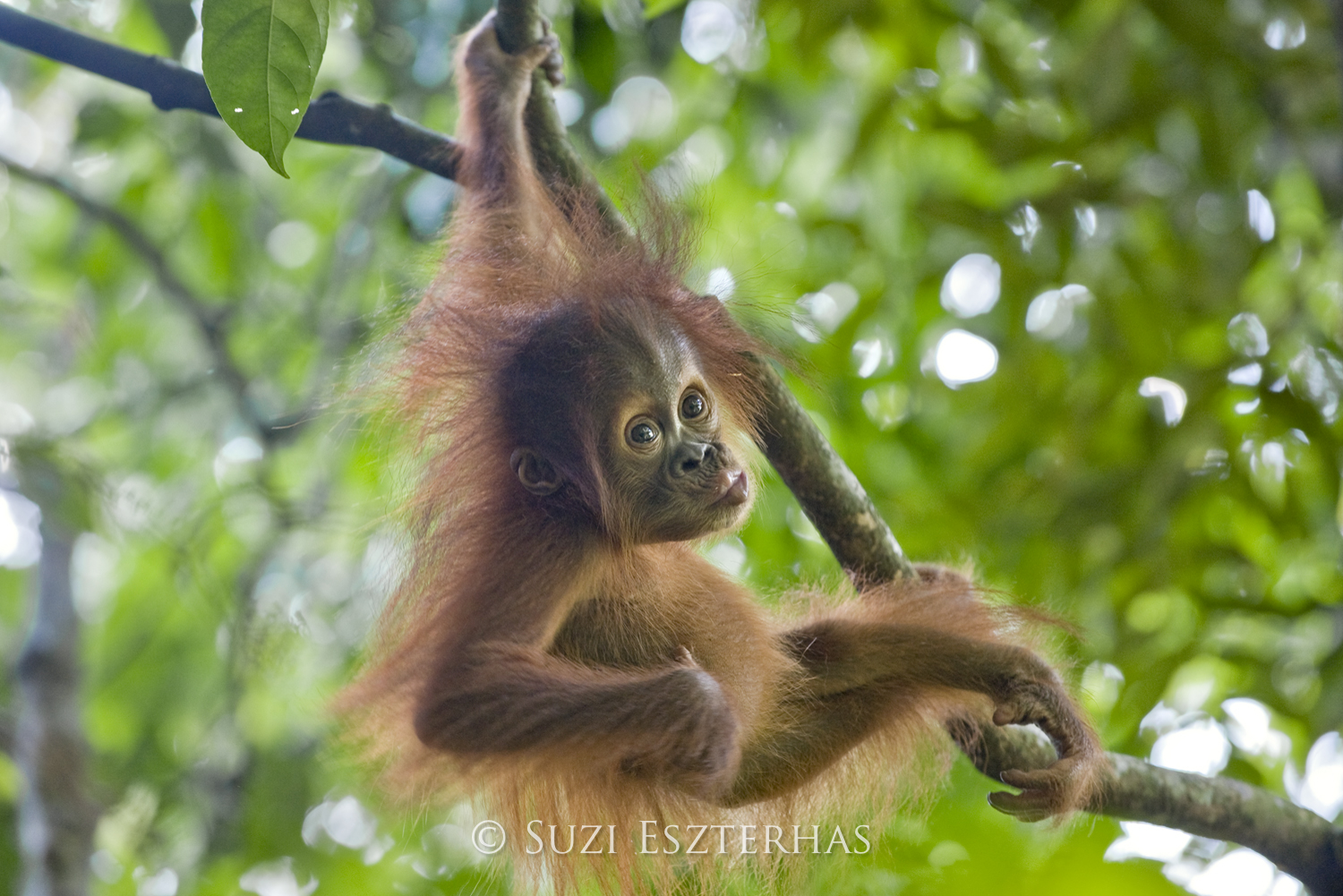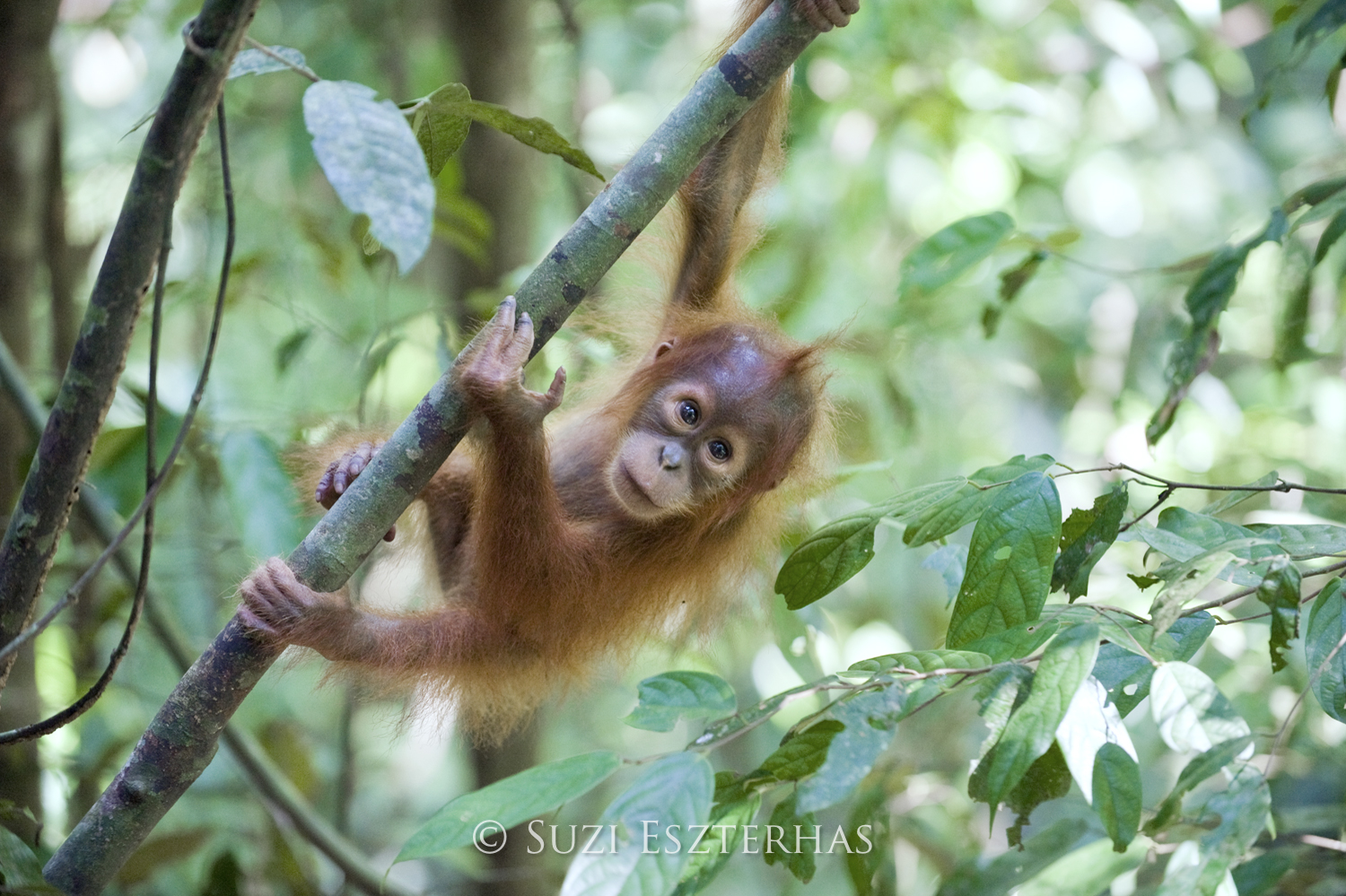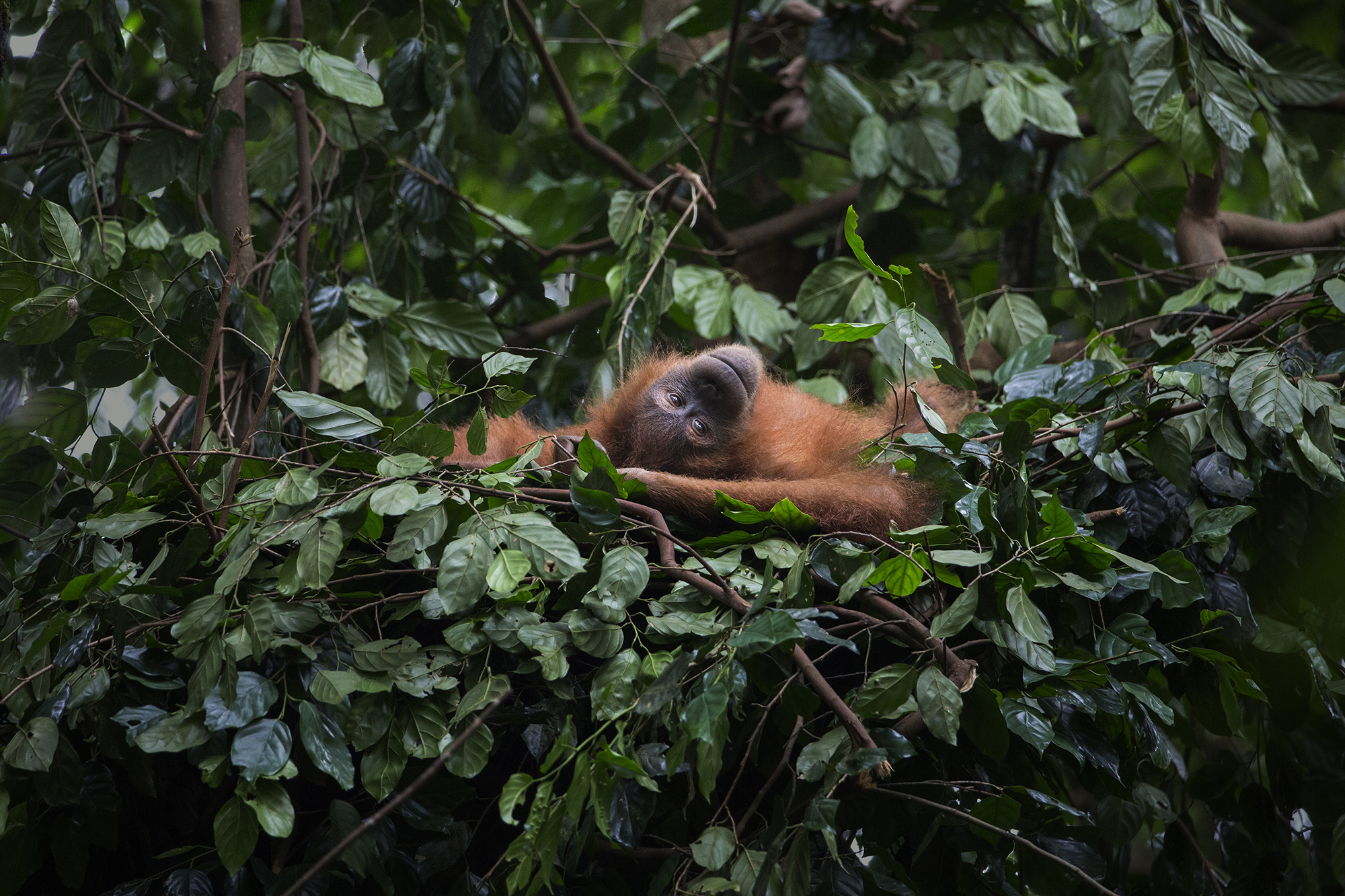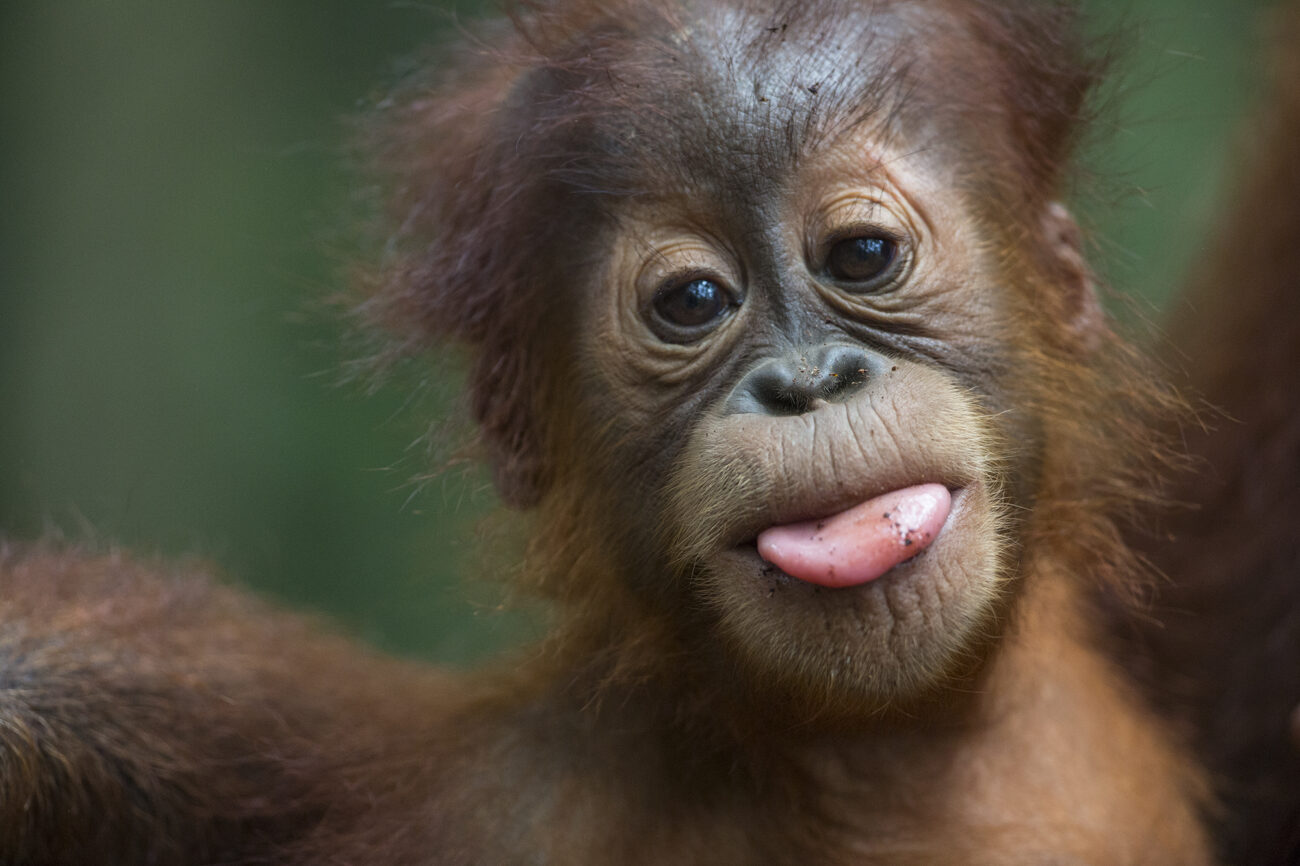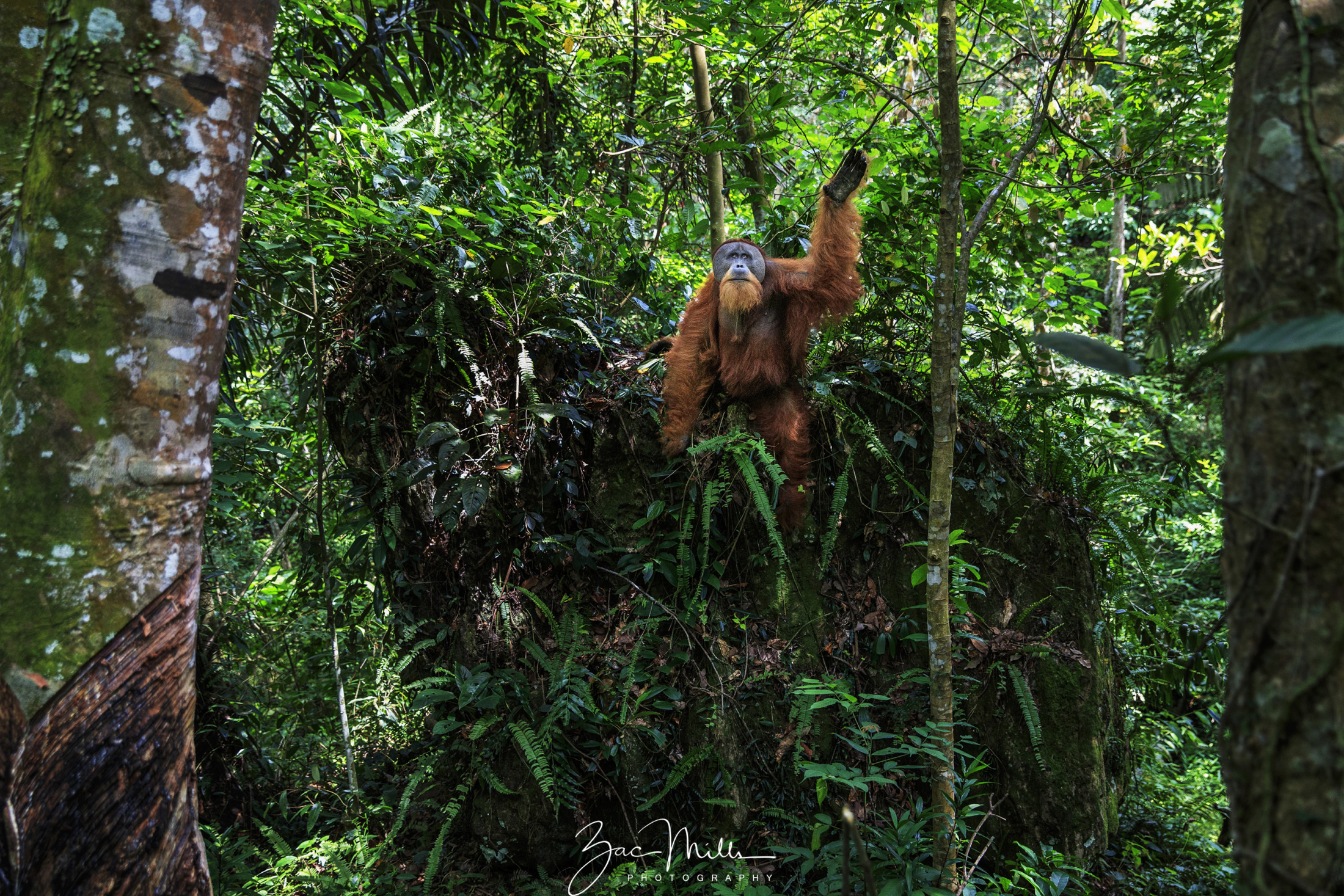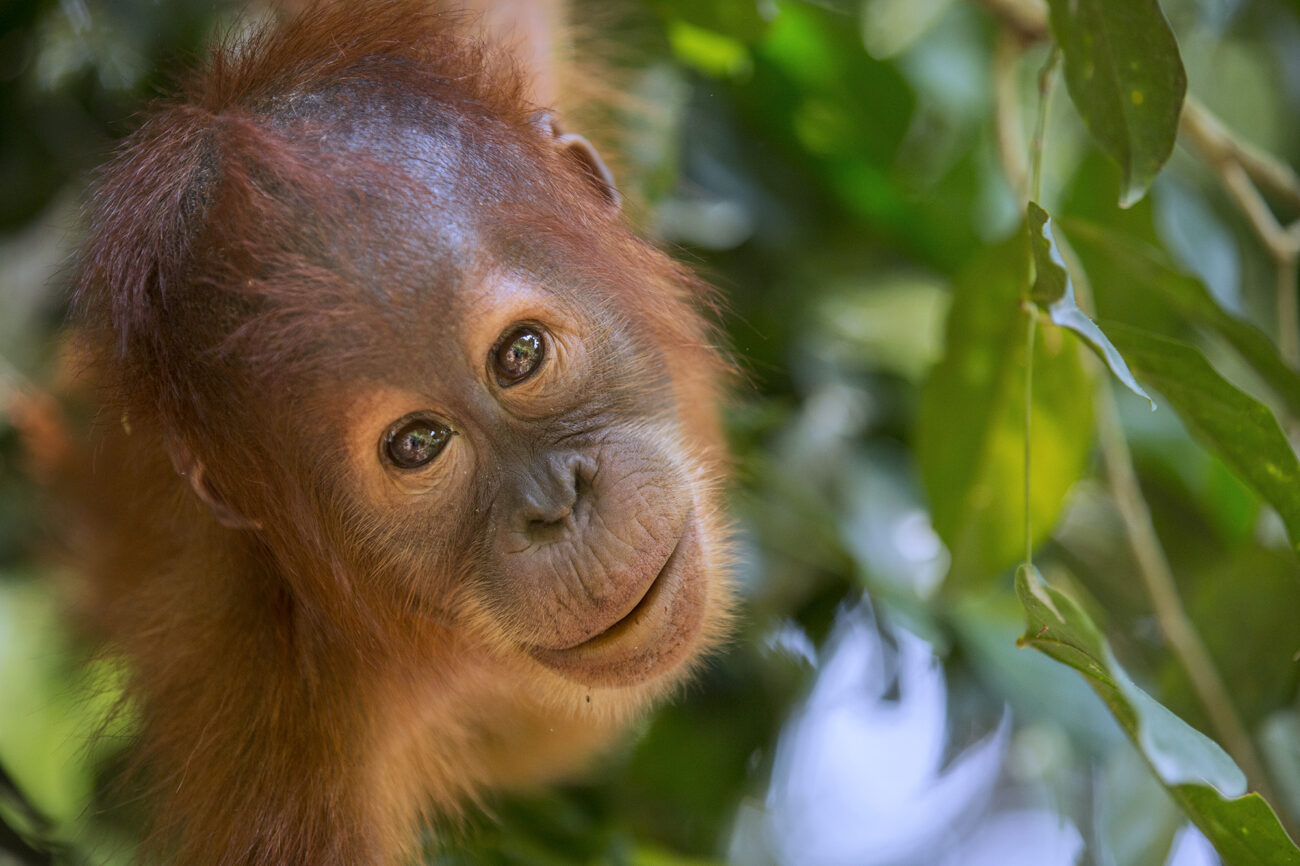Orangutan Behaviour
Orangutans are highly intelligent and gentle animals. They use tools in the wild and have excellent memories, making mental maps of their forest home in order to find fruiting trees throughout the seasons.
Social Interaction
Orangutans are a semi-solitary species, which may have evolved as a result of the unpredictability and scattered nature of available ripe fruit – their staple diet. Orangutans spend 60% of their time foraging and eating.
The relationship between a mother and her child lasts for many years, but the time spent with other orangutans is limited. Once adolescent orangutans become independent, they will live alone or just spend time in the company of other immature orangutans. In the case of females, they frequently return to their mothers to ‘visit’ until they are about 15-16 years old.
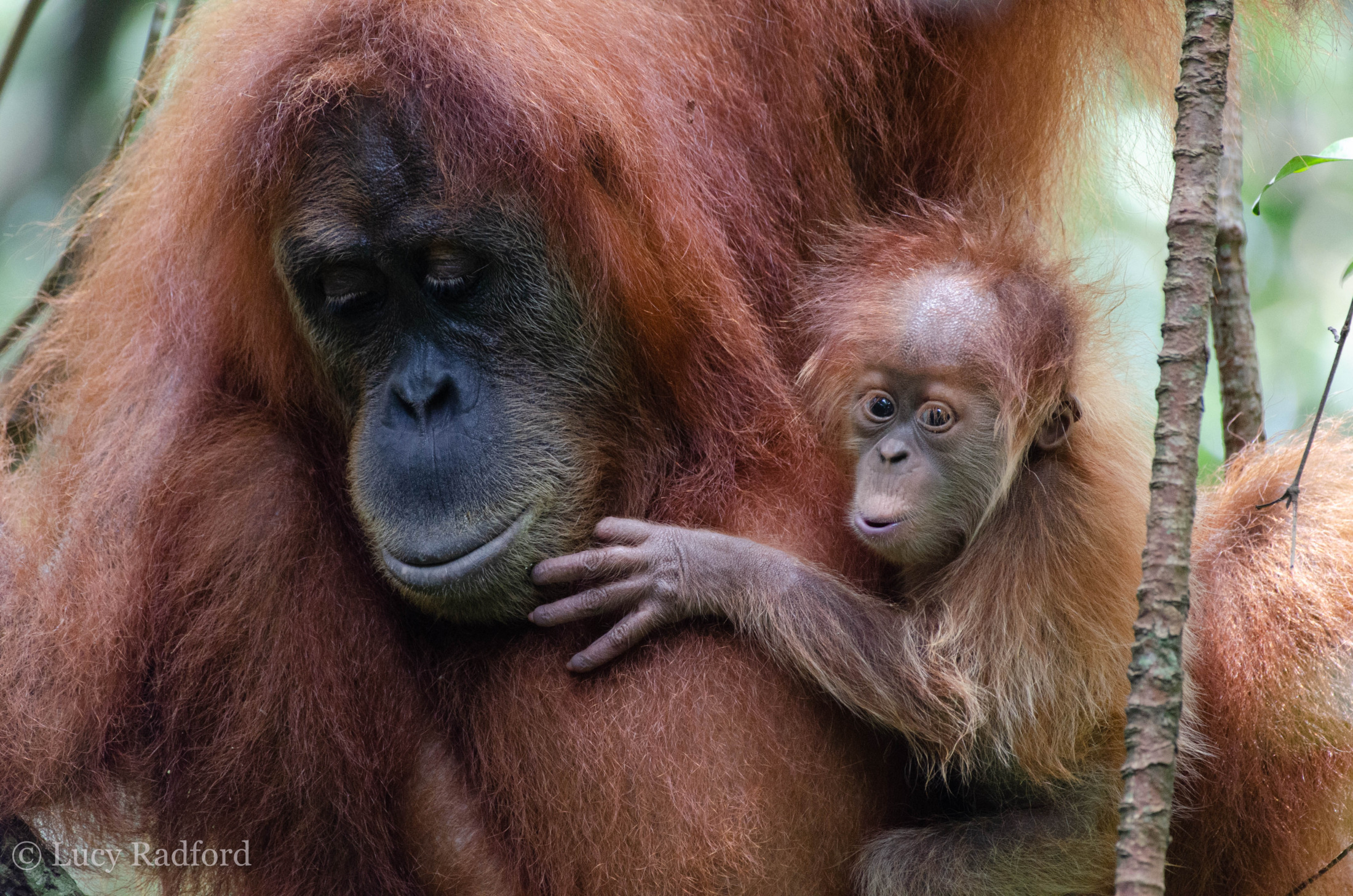
Males who are not yet fully mature tend to associate with other females, particularly adolescents. Flanged adult male orangutans are the most solitary of all, their social interaction is usually limited to mating encounters with receptive females.
There are two types of mature male orangutans – flanged and unflanged. A flanged male has the big flat cheek pads and a large throat sack under his chin. Unflanged males have neither of these and are typically are slightly smaller in the body. Both mature male orangutans are able to mate and successfully father children – however female orangutans seem to prefer flanged males.
Male on male competition for access to females is a major factor in orangutan society. Flanged males have the ability to use their pendulous throat sacs as a resonating chamber for the unmistakable ‘Long Call’ – a truly remarkable sound which can be heard up to a mile away and signifies their flanged status to attract females.
We still don’t really know when and why a male oragutan undergoes the transformation from unflanged to flanged, or even if every male undergoes this transformation.
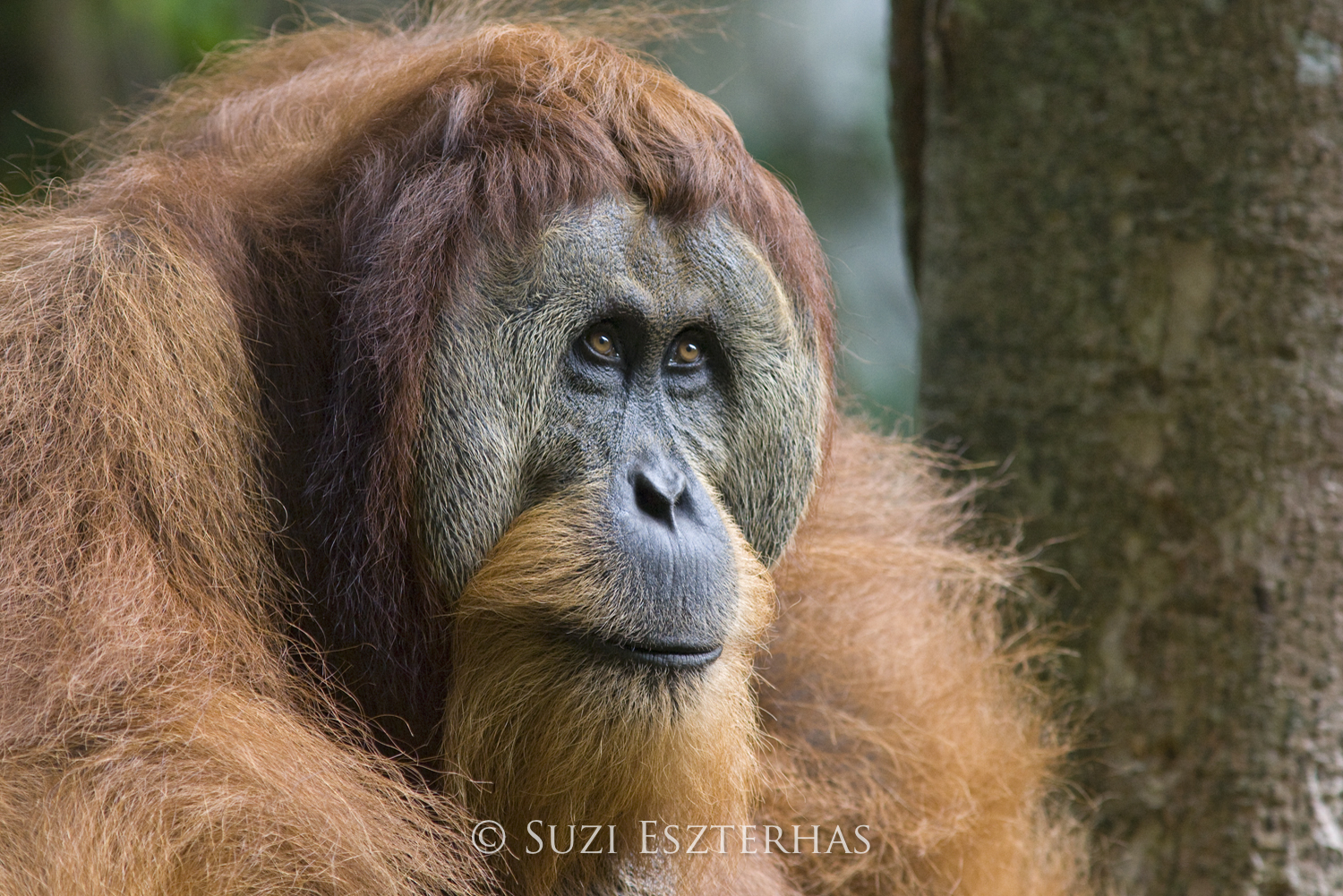
Life Cycle and Maternal Care
Orangutans have the slowest known life histories of any mammal. They take the longest time to grow up and they are the slowest to reproduce.
Orangutans breed more slowly than any other primate, with the female having a baby on average only once every 7-8 years. The gestation period of a baby orangutan is approximately eight and a half months. Single births are most common and babies tend to weigh about 3 ½ pounds. Infants are dependent on their mothers for at least five years, learning about survival in the forest.
For the first two years of a young orangutan’s life, the baby is completely dependent on its mother for food and transportation. A baby orangutan clings to its mother’s stomach, side, or back while she moves through the trees, and feeds on her breast milk.
Orangutan offspring will sometimes be carried until they are 5 years old and be breast-fed until they are 8 years old. Even when young orangutans are too old to be carried and fed by their mother, they may still remain close to her, travelling with her, eating, and resting in the same trees, until they are about 10 years old.

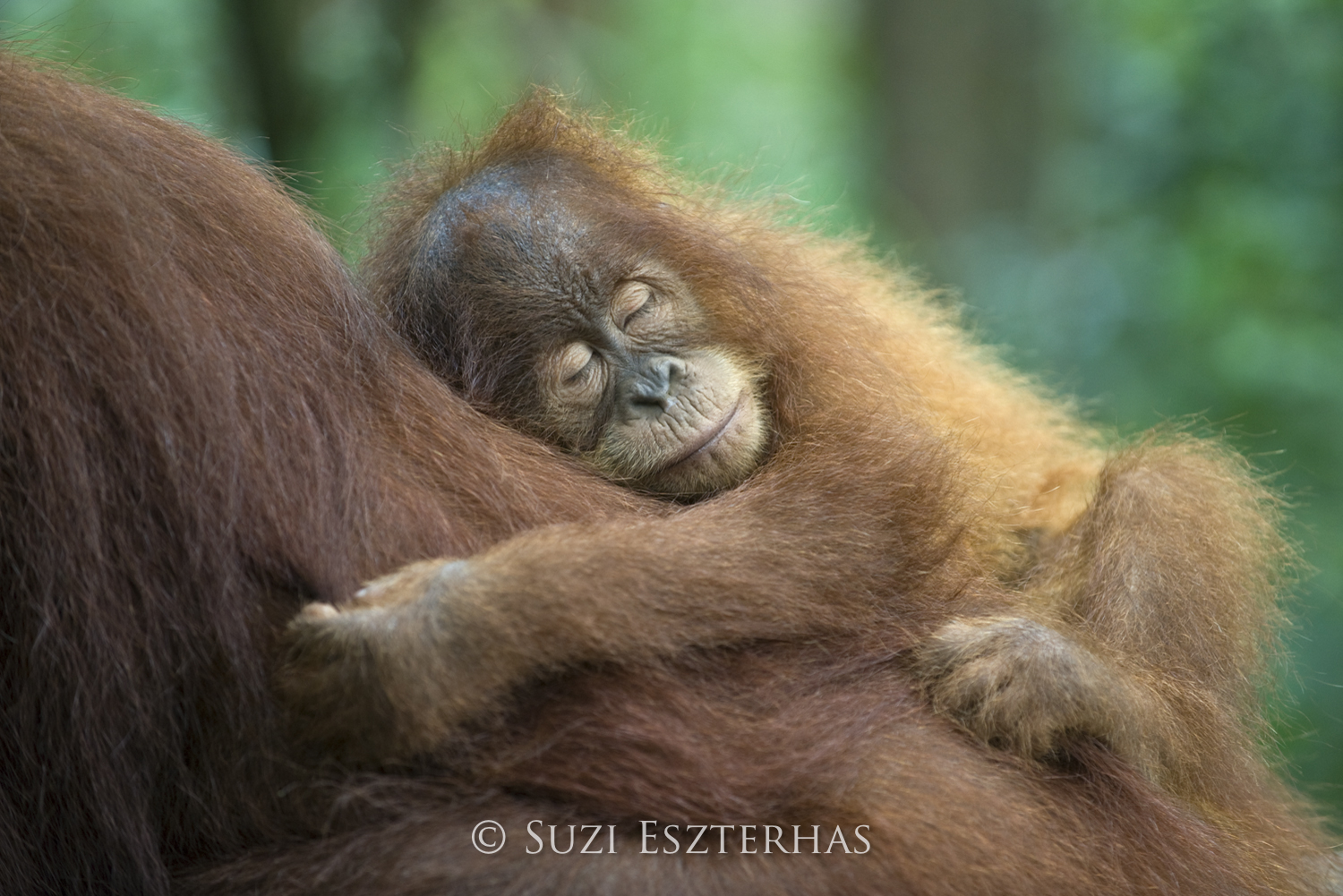
Wild female orangutans usually become sexually active at approximately 12 years, but they will often have their first offspring only at 15-16 years of age.
Orangutans live for around 45 years in the wild, and a female will usually have no more than 3 offspring in her lifetime. This means that orangutan populations increase very slowly, and take a long time to recover from habitat disturbance and hunting.
Such a long association between mother and offspring is rare among mammals. Probably only humans have a more intensive relationship with their mothers. Primatologists believe that orangutans have such long childhoods because there is so much that they need to learn before they can live alone successfully. Young orangutans learn almost everything from their mothers, including where to find food, what to eat and how to eat it, and how to build a proper sleeping nest.
Tool Use
Orangutans have significant cognitive abilities in comparison to the other great apes. This high level of intelligence manifests itself in tool-use and even the making of simple tools in the wild. Some tool use is unique, but other kinds of tool use represent cultural traditions in orangutan populations.
For example, orangutans have been observed making simple tools to scratch themselves. They also use leafy branches to shelter themselves from rain and sun, and sometimes even drape large leaves over themselves. They have also been observed using branches as tools during insect foraging, honey collection, and protection against stinging insects.
In Sumatra, wild orangutans use tools to extract seeds from hard shelled species of fruit.
In parts of Borneo, orangutans use handfuls of leaves as napkins to wipe their chins while orangutans in parts of Sumatra use leaves as gloves, helping them handle spiny fruits and branches, or as seat cushions in spiny trees.
